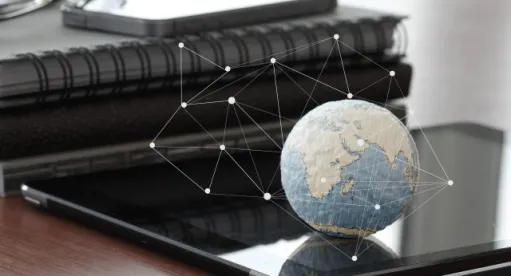Artificial intelligence and big data are some of the new technologies dominating discourse in 2018. These technologies are expected to change the way that we travel, learn, and transact. However, this forecast is less clear for the least developed countries (LDCs).
According to a United Nations study, science and technology and resource and development remain limited in LDCs—several of which are in Africa. Though Africa contains various tech hubs such as Kenya’s Silicon Savannah and Rwanda’s Innovation City, the concern is that without the infrastructure to adapt and absorb existing technologies, it will be difficult for these LDCs to upgrade industries, effectively partner with high tech businesses, and contribute to sustainable development.
So, the question is: how do we overcome the technological divide?
In late 2017, the U.N. General Assembly and Member States operationalized a new mechanism that may provide an answer to this question. This mechanism is called the Technology Bank.
The Technology Bank is a new entity guided by a Council of thirteen independent experts in science, technology, and innovation (STI) and development cooperation. The Bank’s goal is threefold:
(1) Improve LDCs’ scientific research and innovation base,
(2) Promote networking among research institutions, and
(3) Help LDCs access and utilize critical technologies.
Set to begin operations in 2018, the Technology Bank could present a window of opportunity to tap into and expand innovation in Africa.
Important for stakeholders, here are three key features of the Bank:
-
Activities Are Rooted in Sustainable Development
Drawing from technology-driven growth objectives in the Istanbul Program of Action, U.N. Member States in the 2015 Addis Ababa Action Agenda, negotiated the Technology Bank as one of over one hundred concrete measures for implementing the sustainable development goals (SDGs).
Sustainable Development Goal 17 specifically envisions the Technology Bank as a means to build robust STI bases by improving technology access, acquisition, and utilization (SDG target 17.8). The Bank would facilitate North-South, South-South, and triangular cooperation on and access to STI knowledge-sharing (SDG target 17.6). Cooperation would also focus on the development, transfer, dissemination, and diffusion of environmentally sound technologies on favorable terms (SDG target 17.7).
The Technology Bank also advances collaboration to support other sustainable development goals, which include:
-
Ensuring access to affordable and clean energy (SDG 7),
-
Building industry, innovation, and infrastructure (SDG 9), and
-
Fostering sustainable cities and communities (SDG 11).
To achieve these goals, the Bank’s Charter allows organizations, firms, and other stakeholders to enter into agreements with the Bank (art. 4(c), 9(c)). In this way, the Technology Bank is designed with an eye towards long-term collaboration and technological change.
-
Structured to Provide Innovation Support and Reinforce Intellectual Property Rights
A) Innovation Support via STIM Unit
STIM, also known as the Science, Technology and Innovation Supporting and Enabling Mechanism, is the Banks’ first unit. STIM aims to strengthen LDCs’ capacities, both to attract outside technology and to “generate homegrown research and innovation and take them to market.” According to the 3-year Strategic Plan, STIM will promote the development and implementation of national and regional STI strategies. It will also foster collaboration between LDC researchers, research institutions, and public entities.
B) Reinforced Intellectual Property Rights through IP Bank
The second unit, Intellectual Property Bank (IP Bank), is designed to assist LDCs in building national and regional capacities in the areas of IP rights and technology related regulations by helping LDCs:
-
Secure relevant IP at negotiated or concessionary rates,
-
Obtain technical assistance to identify appropriate technologies,
-
Protect IP for technologies facilitated by Technology Bank, and
-
Protect IP rights derived by LDC inventors.
C) Coordination though the Management Support, Partnerships and Coordination Unit
This third unit aims to ensure synergies and coherence across the different work streams of the Technology Bank, and coordinate with relevant stakeholders on Bank activities.
With effective management of IP rights through the IP Bank, there may be more opportunity for businesses in computer technology and pharmaceuticals, to engage with African entrepreneurs. Meanwhile leveraging knowledge networks and facilitating technology transfer in STIM may present an opportunity to make technological building blocks more widely available, while supporting human and institutional capacity to innovate. All three units are designed to work in concert to achieve the action items in the Strategic Plan.
-
Resources Require Continued Investment
Initial resources for the Bank will come from the host country, Turkey. As part of the host and contribution agreements, Turkey pledged to contribute approximately USD 2 million annually for five years, and provide personnel and offices for the premises in Gebze. In January 2018, Norway invested approximately USD 1,070,550. Under the Charter, these and other contributions will be kept in a Trust, subject to audit by the U.N. Board of Auditors.
Additional resources, however, require input from Member States. According to U.N.- OHRLLS estimates, the Technology Bank would require an annual budget of USD 35-40 million. Therefore, the overall sustainability of the Technology Bank, may be determined by stakeholder contribution.
It has been said that “the poorest countries in the world cannot eradicate poverty, achieve strong and sustainable development and build resilience without expanding their scientific and technological bases” and that the pace of new knowledge creation is too rapid for any one country to attempt to go alone. The Technology Bank, as it is envisaged, may have the potential to support Africa’s capacity to meet this challenge. With the ability for stakeholders to participate in the Bank’s sustainable development activities, partner with African innovators, and contribute funds, entities now have another avenue to support new technologies in Africa.




 />i
/>i
